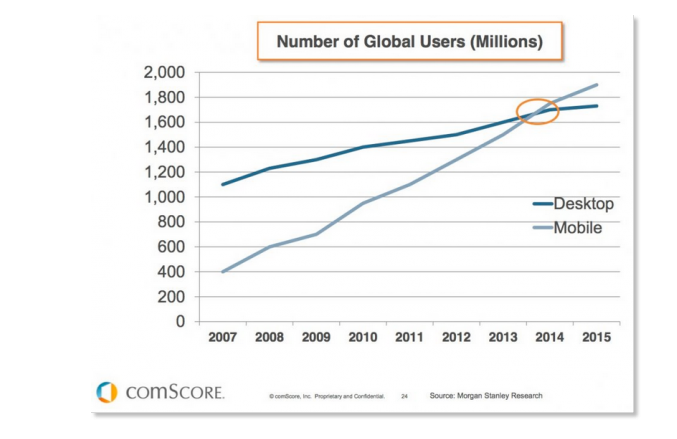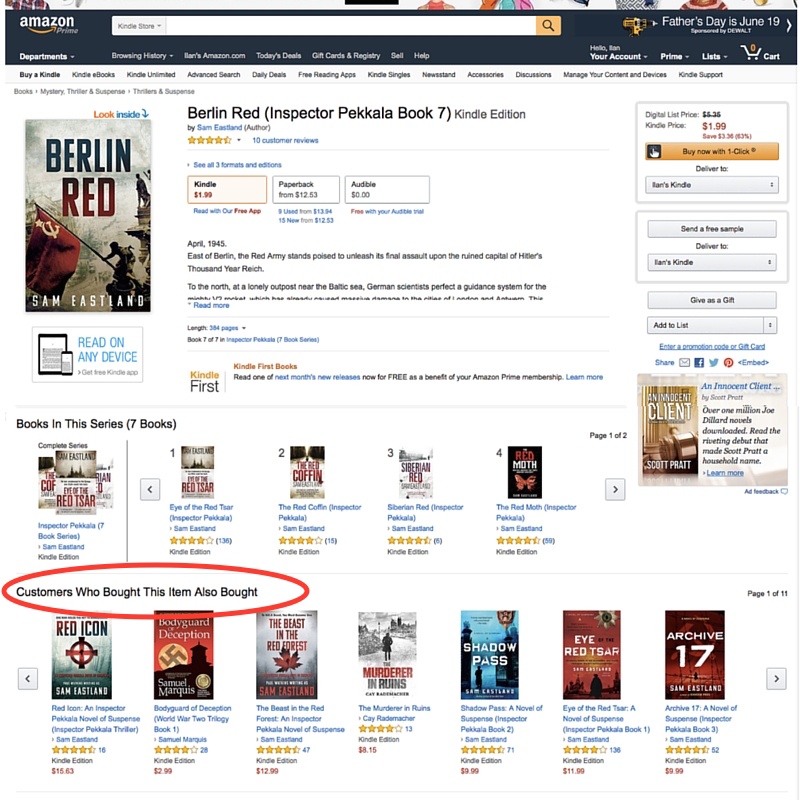As an inbound marketing company in Brooklyn, we know exactly what it takes to run a successful shopping campaign. We also know the mistakes people make that can hinder an shopping campaign. So here are 10 ecommerce conversion mistakes to avoid.
- Not Mobile responsive
If you aren’t thinking of the mobile market, then I just don’t know how you think you’ll succeed in online commerce. Mobile internet users surpassed Desktop users in 2014 according to Comscore.

Check out this Smart insights article to learn more about mobile internet trends. Mobile is already huge and you’d be doing yourself a disservice if you don’t have a mobile-friendly version of your site. If you don’t consider the mobile user, including viewability and ease of payment, then you probably might as well kiss your customers goodbye!
- Unclear navigation
Nobody likes a messy website, people appreciate simplicity and ease when they’re browsing a website. There are some very obvious rookie mistakes people make that can deter potential customers from using your site. Some of these issues include having your search bar in an obscure location, disjointed product categories, or even including your navigation bar on the left side (I know, seems crazy but it’s actually more important than you think).

Check out this great Smart insights article for more information on optimizing your pages.
- Add cart button below the fold

Hey, you want people to be able to buy whatever it is you’re selling as fast as possible, why not make the cart be readily available to your client? If they don’t see a “buy it now” option, it could push away a possible sale.
- Not showing Social recommendations buttons

Everyone’s on social media, why not take advantage of it? If you have your social media recommendations readily available, you might gain more followers, or people would be more willing to share your product, thus bringing in some potential new customers. Consider offering a reward to customers who shopped at your website and provided a testimonial. A small coupon or free shipping on the next order will probably suffice and will help persuade the users to leave a comment on the product page or on your social channels.
- Neglecting cross-selling opportunities
For many ecommerce websites, cross sale and up sale opportunities are what makes the most money for the website. It is easier to sell an existing customer another product than getting a brand new conversion from a brand new prospect. Most ecommerce platform allow for automatic or manual matching of products to existing customers. Amazon does it beautifully.

As you can see above, Amazon is using its customer data to offer additional purchases, based on other customers purchase history and shopping profiles.
Other competitive industries such as travel offer the cross sales or up sales opportunities even before you started shopping.

In this interface, Expedia offers to sell you a car rental and a hotel room the moment you chose to shop for a flight. The travel industry relies heavily on bundled items and markets them aggresively to its prospects.
- Not showing prominent trust logos on the shopping cart pages
No matter how good your deals might be, or how good the product is, nobody is gonna buy from you if the site seems sketchy. Even if it looks somewhat reliable, people are hesitant to have their personal information out there on a site they don’t really know. With security breaches at high profile websites, people are worried about losing their identity, so try and make them feel comfortable at the checkout page with some logos people trust, and would be more willing to give their sensitive information to you.This is how our friends at Outdora solved this challange:
![]()
As you can see. Outdora inserted five trust blocks in their checkout page. Four of these “trust blocks” are around the “Proceed to checkout” button. A very strategic location, when you try to close the tranaction. The fifth logo is at the bottom of the checkut page. If the prospect is still hesitant and is looking to navigate out of your shopping cart, than he sees an additional trust logo at the bottom of the page. This is another opportunity to broadcast that your website is safe and the prospective client should continue with the transaction.
- No plan to drive traffic to your website

As I am sure you appreciate by now, making a website is hard, time consuming and sometime frustrating. It’s a great feeling to launch your website, but it just the first step on the road to monetizing it. Now is the time to launch your genious plan and attract the people who will buy your wonderful products. It’s important to have some sort of plan to increase your eCommerce search engine optimization . If you plan to get clients from social media, you should try creating social media campaigns for your site, or having your friends and family share your site in order to gain traction. Blogging is also a really good way for people to come check out your site. Pay per click camapigns can get your website in front of people who are searching for your products and if done right can be very effective. Whatever you decide to do in order to get the word out, make sure that you have a plan and a budget before launching your ecommerce website.
- Slow site speed

I hate slow sites. It might be one of the most frustrating First-World Pet Peeves I have. Every time I go on a slow site it makes me want to punch a hole through my screen and throw my computer at the wall in anger. If I go on on a website for the first time and it’s too slow (barring a terrible internet connection) I’ll leave almost immediately, and this is true for a lot of people. So, try and make your site fast and easy to use, you don’t want to lose any of your potential consumer base, and having a slow site will turn everyone off from your site.
- Not maximizing social media potential

Hey! It’s the Twenty-First Century! Social commerce is a big part of the tools you will need to master. Learn how to use it effectively (or hire someone who does) and use it effectively. Social media presence can be monitized in many ways and we will write a comprehensive blog post on it in the future. Creative Social Media camapigns encourage interaction with your website and products and get expose your site to hard to reach audiences who are willing to spend money on your products. Try out different creative social media campaigns to attract shoppers to your website. Try different things on different platforms and analyze your data constantly in order to optimize your efforts.
- Using stock product descriptions
You should write your own product descriptions. Mainly because the factory product descriptions are mostly boring, and everybody uses them… It’ll be tough to distinguish the product from other sites that also use the stock description. If you have unique product descriptions, it’ll set you aside from the competition, and can ultimately help entice your visitor into buying the product on your website. CONTENT IS KING!!!! So make sure you have high quality content on your website. Hire a fun and descriptive writer. It will probably one of the best investments you can do when trying to optimize your ecommerce operation.






